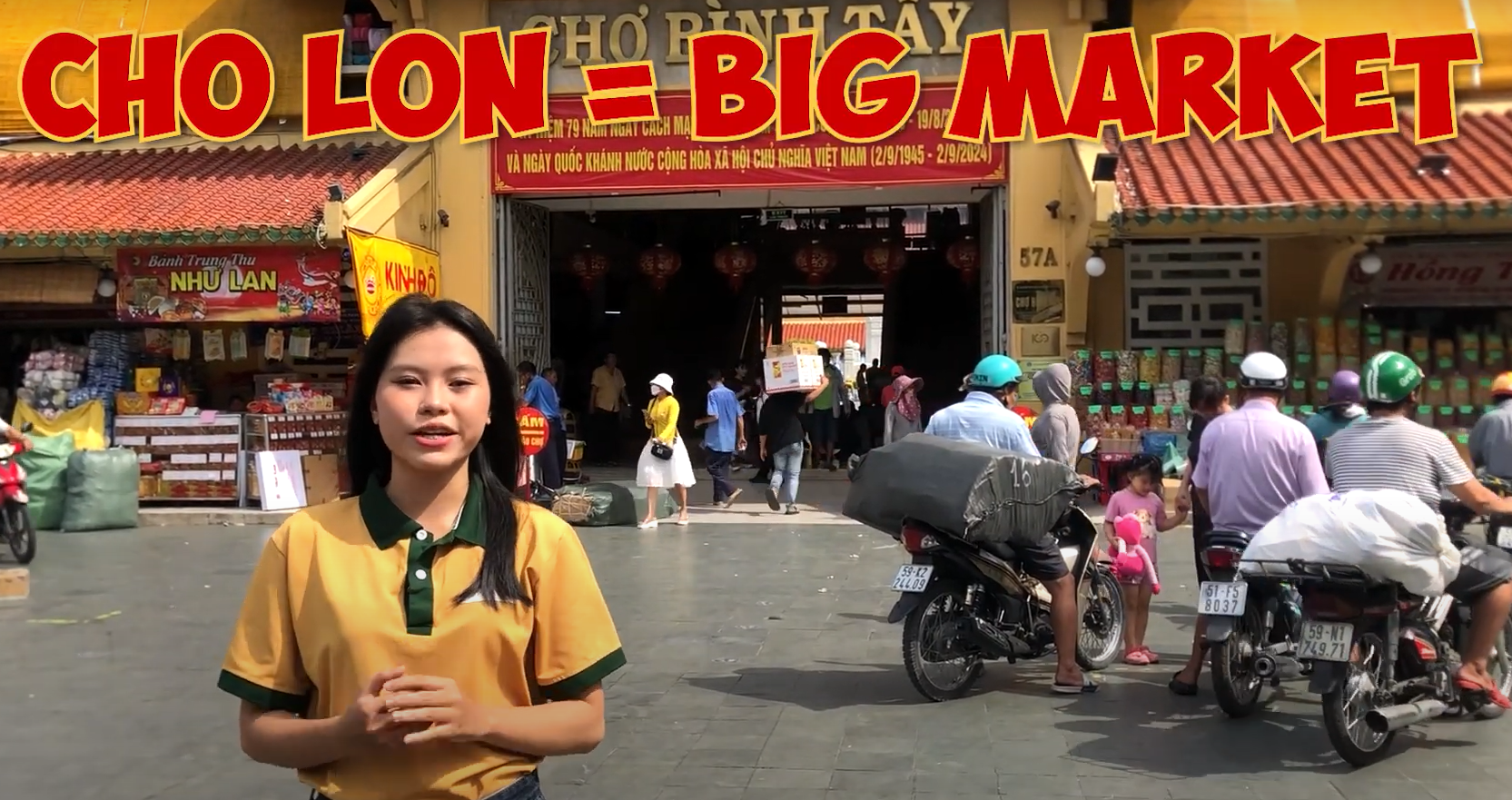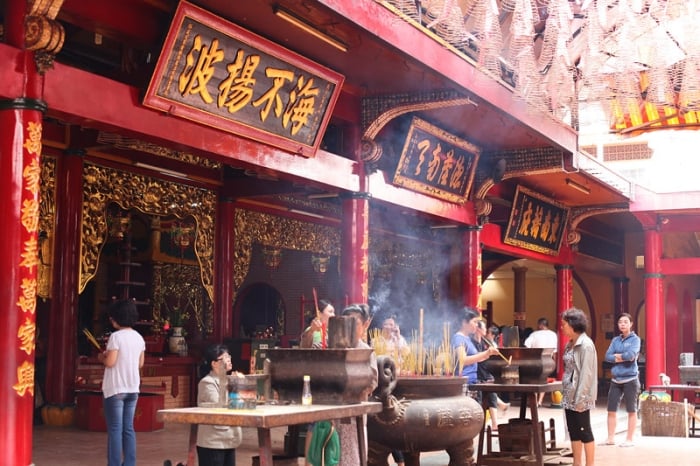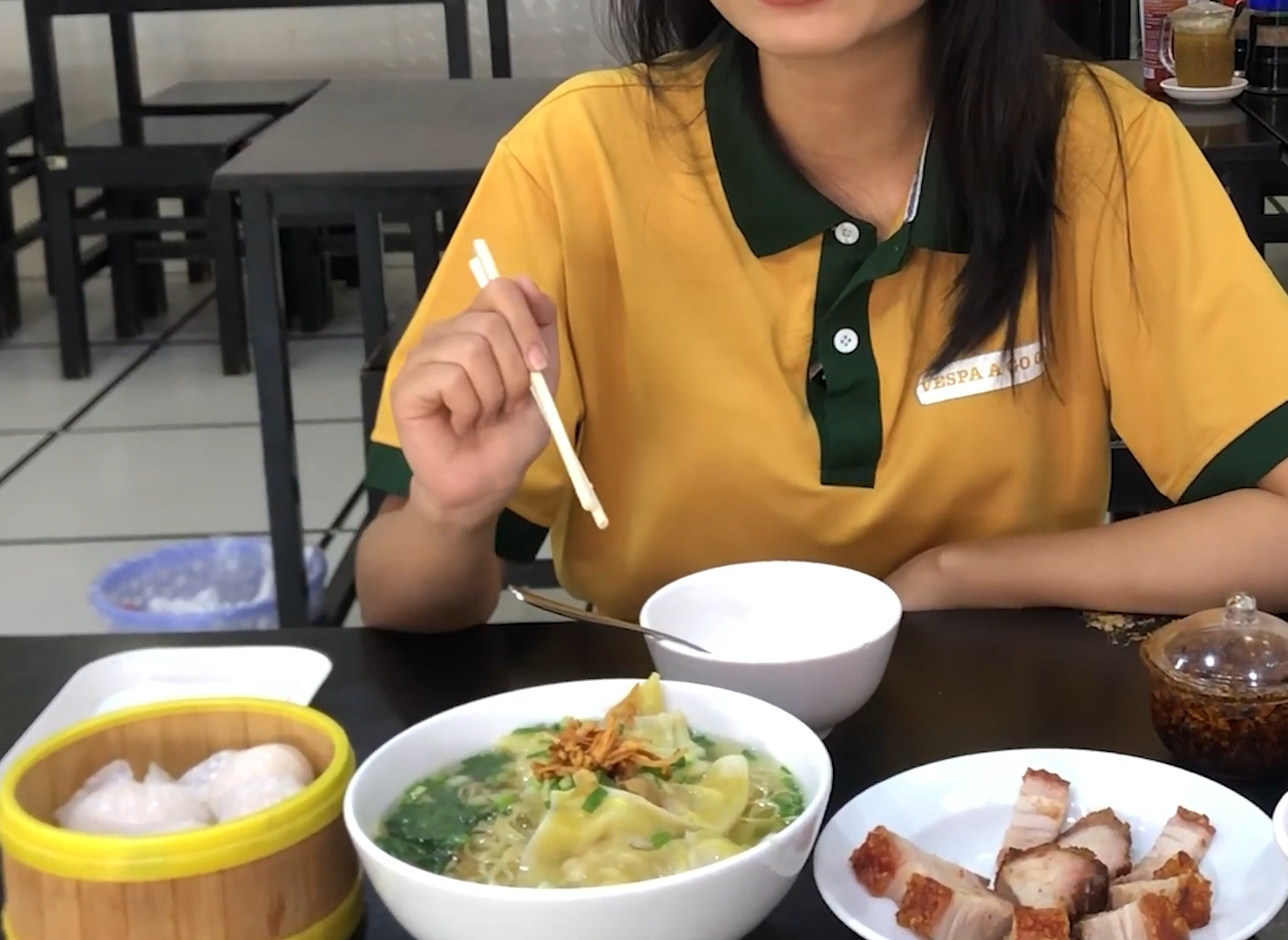 Email: support@vespaagogo.com
Email: support@vespaagogo.comSaigon Travel
- Home
- Travel Tips
Chinatown in Ho Chi Minh City: A Cultural and Historical Enclave
2025-09-01
Table of contents
- The history of Chinatown in HCMC
- The cultural fabric of Chinatown
- Did someone say dumplings?
- Where commerce meets tradition
- Let Vespa A Go Go show you Chinatown!
Ho Chi Minh City (HCMC), also known as Saigon, is the bustling economic hub of Vietnam. Amidst the fast-paced life of this vibrant city, one historical district stands out—Chinatown, or "Chợ Lớn." This area, located in District 5, is a fascinating blend of history, culture, and commerce that has been evolving for centuries. It’s a place where the enduring legacy of the Chinese community continues to flourish, providing an immersive cultural experience that captures the heart and soul of HCMC.
The history of Chinatown in HCMC
Chinatown in Ho Chi Minh City traces its roots back to the late 17th century, when waves of Chinese immigrants, mostly from the Guangdong and Fujian provinces, sought refuge in southern Vietnam due to political instability and economic hardship in China. These early settlers, known as the Hoa people, initially took residence in the area now recognized as District 5. Over time, the small settlement grew into a bustling community, which would become the largest Chinatown not only in Vietnam but also in the world.
 The name says it all - the biggest market in Saigon, serves as a trading hub
The name says it all - the biggest market in Saigon, serves as a trading hub
Referred to locally "Chợ Lớn" which translates to "Big Market” is a fitting description given the area's historical role as a bustling commercial center. Over the centuries, Chợ Lớn developed into a thriving hub of trade, especially in rice, textiles, and traditional Chinese goods. The Hoa people created economic development in the region, and their influence is still strongly evident in the area's architecture, cuisine, and traditional cultural practices.
The cultural fabric of Chinatown
Stepping into Chinatown is like walking through a living museum, where Chinese and Vietnamese cultures have intertwined and influenced each other over hundreds of years. The local Chinese community, primarily descendants of the Hoa people, has played a crucial role in shaping the cultural landscape of this area. Today, this area is home to numerous Chinese cultural landmarks, businesses, and practices that continue to thrive amidst the modern-day hustle of Ho Chi Minh City.

Thien Hau Temple - one of the oldest Saigon temple you don’t want to miss
One of the most striking features of Chinatown is its architecture, plastered with vibrant colors. The area is painted with historic Chinese temples, pagodas, and shophouses that showcase traditional Chinese design elements. The Thien Hau Pagoda located on Nguyen Trai Street is dedicated to the Chinese Goddess of Sea Mazu and is one of the most prominent religious sites in Chợ Lớn. Built in 1760 by the Cantonese community, the temple is a beautiful example of southern Chinese architecture, boasting intricate wood carvings, ornate altars, and colorful ceramic figurines.
Another significant site is the Quan Am Pagoda, dedicated to the Buddhist Goddess of Mercy and embodiment of compassion, Guanyin. This temple holds deep significance for the local Chinese people, acting as a spiritual center that captivates visitors with its peaceful atmosphere and impressive statues. The pagoda's architecture blends Chinese and Vietnamese styles, reflecting the cultural synthesis that defines Sai Gon Cho Lon.
Fun fact! Join our Saigon Secret’s tour and you’ll get to experience these temples!

Quan Am Pagoda - the sacred local community hub that represents the essence of Chinatown
In addition to the temples, this area is home to Cha Tam Church, also known as Saint Francis Xavier Parish Church, which holds a unique place in the history of the local Chinese community. Built in the early 20th century, Cha Tam Church is the first church for the Catholic parishioners of the Chinese community in Ho Chi Minh City. This historical site stands as a testament to the resilience and faith of the Chinese people in the region.
Beyond the temples, Chinatown is also known for its vibrant traditional festivals held throughout the year. The Lunar New Year, or Tết Nguyên Đán, is the most spectacular celebration in the district, bringing the streets to life with dragon dances, fireworks, and ancestral offerings. Another major event is the Mid-Autumn Festival, when the neighborhood glows with lantern displays, lion dances, and an abundance of mooncakes. These celebrations, deeply rooted in tradition, offer a glimpse into the cultural heritage that continues to shape the identity of the Chinese-Vietnamese community in Ho Chi Minh City.
During Lunar New Year, the Chinese temples become the heart of festive traditions, as families and devotees visit to light incense, make offerings, and pray for prosperity in the coming year. Thien Hau Temple, in particular, is an important site where people seek blessings from the sea goddess, Mazu. The air is filled with the fragrance of burning joss sticks, while vibrant red and gold decorations symbolize luck and happiness. The rituals performed in these sacred spaces reflect the deeply rooted spiritual beliefs of the Chinese-Vietnamese community, making the festival an unforgettable cultural experience.
Like many well known areas in Saigon, Chinatown is also known for its bustling markets. You can find a wide array of goods ranging from traditional Chinese medicine to fresh produce and household items. The Binh Tay Market, spanning over four streets in District 6, is the largest in Chợ Lớn. Originally built in 1928 by Chinese merchant Quach Dam (also known as Thong Hiep), the market is a lively place where over 1,400 stalls attract locals and visitors alike to come to shop, eat, and experience the lively atmosphere of the Chinese community.
Did someone say dumplings?
The food scene in Chinatown is a foodie's paradise, offering up a diverse range of Chinese and Vietnamese dishes. Street stalls and traditional Chinese restaurants serve up everything from dumplings, dim sum, and roast duck (drooling, yet?) to pho and banh mi, an ode to the fusion of Chinese and Vietnamese culinary traditions. If you're a fan of street food, you'll love the vibrant offerings available at every corner, where you can sample fresh, flavorful dishes that reflect the heart of both cultures.
A standout dish that you must try here is hủ tiếu (kuay teow), a Vietnamese noodle soup that features rice noodles in a savory broth, accompanied by a variety of meats, seafood, and vegetables. What makes hủ tiếu so special is the multitude of regional variations, each one influenced by the Chinese immigrants who brought their flavors and cooking techniques to Vietnam. The dish is a perfect example of how Chinese immigrants have integrated their culinary practices into the fabric of Vietnamese food culture.
 Welcome to Mini Hong Kong - where you can find the best food in Ho Chi Minh City
Welcome to Mini Hong Kong - where you can find the best food in Ho Chi Minh City
You can’t visit Chinatown without devouring Chinese-style roasted meats! Char siu (barbecue pork) and Peking duck are served with steamed rice or in banh mi sandwiches. The sweet and savory glaze on the pork is a hallmark of Chinese cuisine, and the dish remains incredibly popular in the local community. These dishes are prepared by local Chinese families who have passed down their recipes through generations, meaning the flavors remain authentic and true to their origins.
Where commerce meets tradition
While Sai Gon Cho Lon offers centuries of cultural and historical significance, it continues to operate as a bustling commercial district. The area is home to numerous businesses, ranging from traditional herbal medicine shops to modern electronics stores. The entrepreneurial spirit of the Chinese community is evident in the numerous small businesses that line the streets of Chợ Lớn, many of which have been passed down through generations. The entrepreneurial spirit of the Chinese community is evident in the numerous family-owned businesses that line the streets, offering everything from fresh produce to traditional Chinese goods.
Interested in Eastern medicine? Take a trip down the streets where you can find apothecaries and herbal medicine shops offering remedies for various ailments. You can also find a wide range of herbs, dried mushrooms, and other natural ingredients, reflecting the importance of traditional medicine in Chinese culture.
Another highlight of Chinatown’s commercial life is the Binh Tay Market, which spans four streets in District 6. Originally built in 1928 by the Chinese merchant Quach Dam, this market is the largest in Chợ Lớn and remains one of the most popular spots for locals and visitors alike. The market is a vibrant, lively place where Chinese people and Vietnamese locals come together to trade, shop, and socialize. Here, you can find everything from fresh fruits and vegetables to traditional Chinese products like incense, herbs, and textiles. Walking through the market is an immersive experience, offering a true taste of the Saigon Chinese community bustling atmosphere and the enduring influence of the Chinese people in the area.
Let Vespa A Go Go show you Chinatown!

We make sure to give you the best authentic experience of the Vietnamese-Chinese culture!
Looking to experience Ho Chi Minh city's Chinatown in all its glory? Let Vespa A Go Go take you on an unforgettable ride through this fascinating cultural district. Our guided tours will allow you to explore the history, culture, and food scene of Chinatown, giving you a true sense of what makes this neighborhood so unique. From the stunning temples to the lively markets and mouthwatering food, book a tour and let us show you Saigon like never before!
Other tips
- Binh Thanh District: Saigon’s Most Underrated Street Food Area on Ancient Ground
- Is Traffic Bad on Christmas Eve? The Truth About Traffic Christmas Eve Vietnam
- The Ultimate Guide: 16+ Best Shops for Souvenirs from Ho Chi Minh (2025 Edition)
- District 4 Saigon: A Local’s 2025 Guide to Food, Alleys, and Its Notorious-but-Lovable Past
- Finding a Coffee Shop in District 2: 20 Hidden Gems in Thao Dien
- Discovering District 1 in Saigon: The Heartbeat of Ho Chi Minh City
- Discover the Modern Oasis of Saigon: A Local’s Guide to District 7
- Discover the Charm of Saigon's East Side: A Local’s Guide to District 2
- Discover the Heart of Saigon: A Local’s Guide to District 3
- The Soul of Saigon: Life on a Motorbike
- Exploring the Districts of Ho Chi Minh City: A Tapestry of History, Culture, and Daily Life

